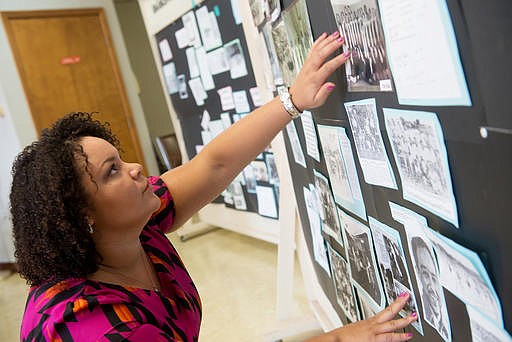JOPLIN, Mo. (AP) - Betty Smith and Susie Reaves, who have been activists and historians in Joplin's black community, both cite instances where they say articles in The Joplin Globe (http://j.mp/2aE9yw6 ) helped keep an unwelcome industry out of their neighborhood and resulted in improved maintenance for a city cemetery established for the town's black population.
Those articles, and others, were noted by Dola Flake in research on the history of the black community in Joplin as part of her duties with the Emancipation Committee organizing this weekend's Emancipation Park Days celebration.
Emancipation Park Days celebrate the date President Abraham Lincoln's proclamation to free the slaves, issued in 1863, reached black residents in the area. The first organized celebration in Joplin came in 1927.
"Here it was on the fourth of August, and it didn't matter what day of the week it fell on," Smith said. "It was a one-day celebration, but people would come from all over and stay overnight in the park."
This weekend's celebration continues today with activities including a basketball tournament, car show, kids fest, and live entertainment including the Kansas City Marching Cobras. Festivities will wrap up with a church service when members from four local congregations gather under a tent in the park. There also will be a free swim, a children's picnic and safety fair.
The goal of the committee, Flake said, is to advocate, serve and educate.
"One of the things we're doing is compiling a history of the black community in Joplin so it can be shared with young people who would benefit from learning more about their black heritage here."
Flake said she was surprised at the amount of coverage on black issues that she found in the Globe.
"You look through some things on our local history and it looks like blacks didn't even exist; it was almost like no blacks lived here," she said.
Smith said the Globe covered efforts by neighbors in the 1960s who banded together to battle the proposed construction of a machine plant in East Town, where many black residents lived.
"We were having enough problems. We didn't want any more noise and dirt - you couldn't even hang your clothes out," she said. "We worked against it, the Globe covered it and we got it stopped."
Then she and others went to the Joplin Public Library and started doing research on how Joplin could develop a housing authority to improve the quality of housing for residents.
After they and others petitioned the Joplin City Council, an authority was established by ordinance in 1968. It took nearly a decade, but by 1976 Joplin had provided housing assistance for low-income residents along with an apartment building for the elderly.
"There was also support in the white community and groups who pushed things forward," Flake said.
Susie Reaves said the Globe "really helped" in 2002 with coverage of efforts by the two women to ensure that the maintenance of Parkway Cemetery, where many black residents were buried, was the same as in Osborne Cemetery across the street.
"It was terribly neglected and we tried to get something done. They didn't do anything until stories started coming out in the paper. I don't think it would have happened without the newspaper," Reaves said.
Globe articles also detailed the donation of land for Ewert Park for use by Joplin's black residents in 1924 and the establishment of the "cemetery for Negroes" in 1933.
"There were black men in Joplin who had no place where they could go to congregate or for entertainment," Smith said. "They weren't allowed in Schifferdecker or Landreth or other parks, so that land was donated to the black community."
She said black people were allowed to be buried in Fairview Cemetery.
"But they could only be buried along the fence row; they couldn't be buried in the center part of the cemetery," Smith added. "When the fence row got filled, that's when land for Parkway was donated."
Flake said Globe coverage did not seem to ignore or minimize instances when African-Americans were the victims of crime.
"They covered things like the destruction of black businesses," she said. "They wrote about people who committed crimes against blacks. At the time, I know some readers would have been OK with the Globe ignoring that."
Globe articles also detailed the establishment of the Washington Carver nursery, started in 1952 to serve black children of working mothers. The nursery was started by Melissa Cuther, who also started the first Girl Scout troop for black girls and pushed federal officials for the establishment of the George Washington Carver National Monument.
In 1975, the Globe reported on the reorganization of a Ku Klux Klan chapter in the area. The grand dragon said the organization "didn't have anything against minority groups" and said members wanted to stop drug abuse in schools and stop communism.
The charter was issued by David Duke, former KKK Grand Wizard and a former Republican state legislator who this year is running for the U.S. Senate from Louisiana.
Globe stories also detailed questions raised by Joplin's black leaders about the city's minorities and covered action on the city's adoption of an affirmative action policy.
___
Information from: The Joplin (Mo.) Globe, http://www.joplinglobe.com

